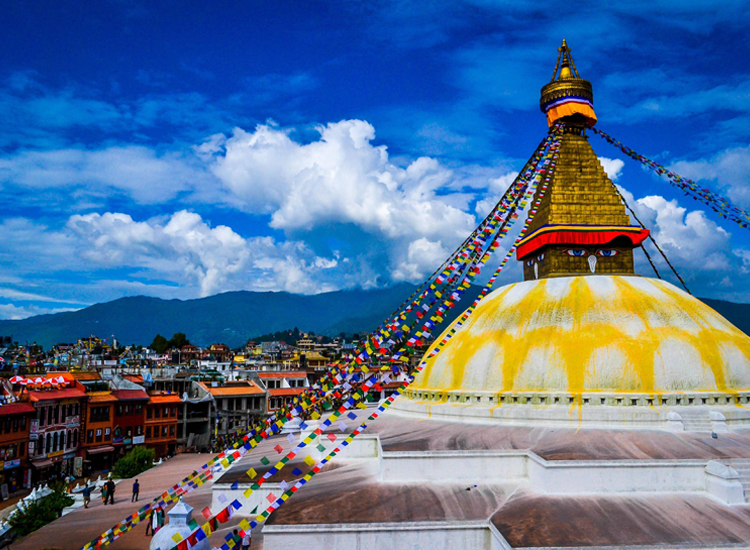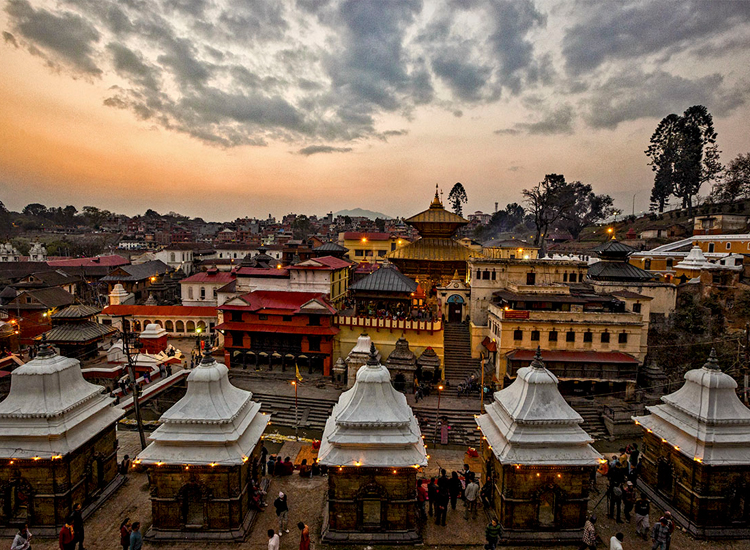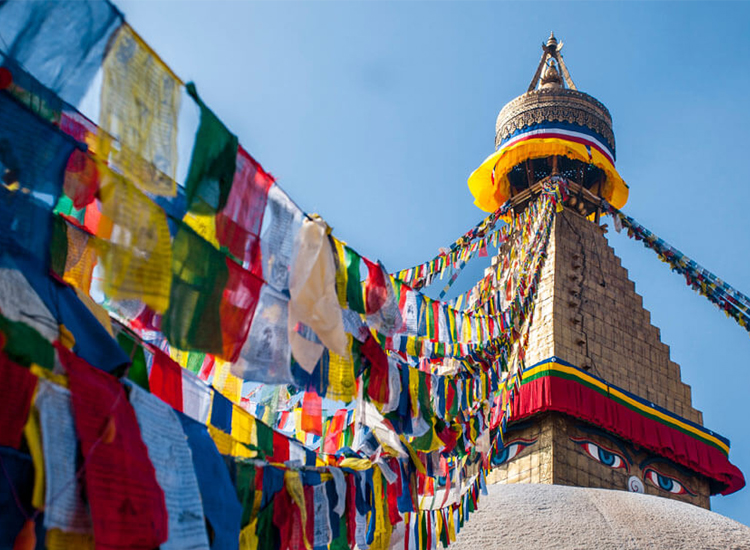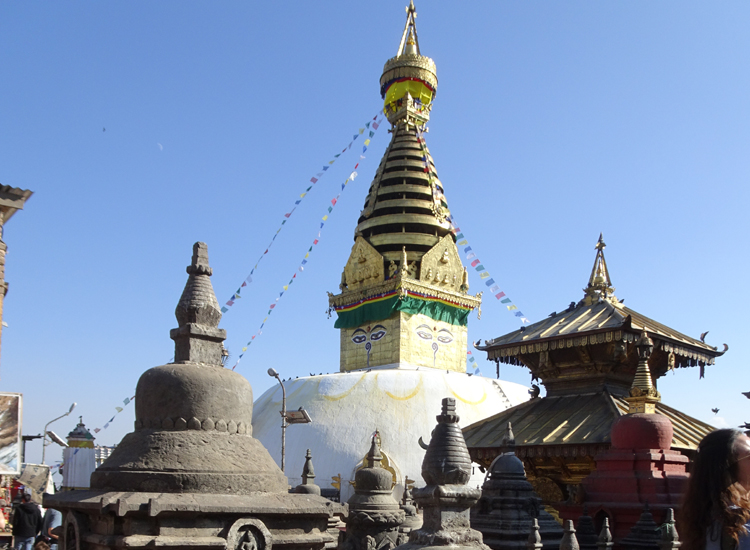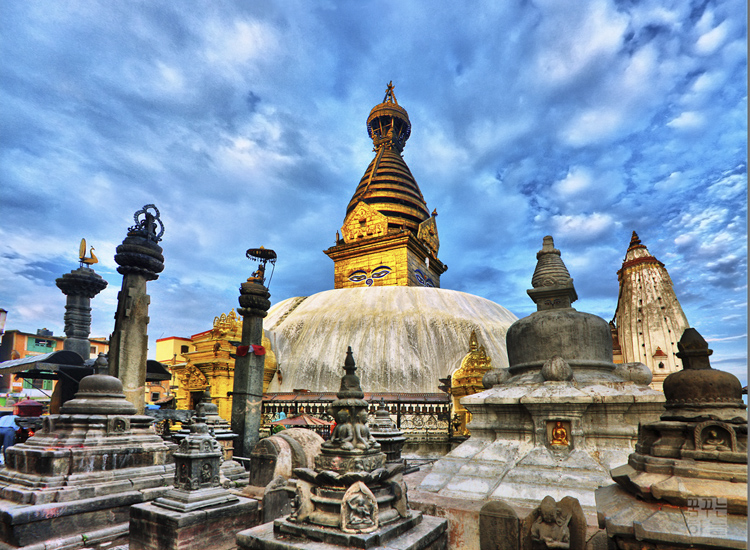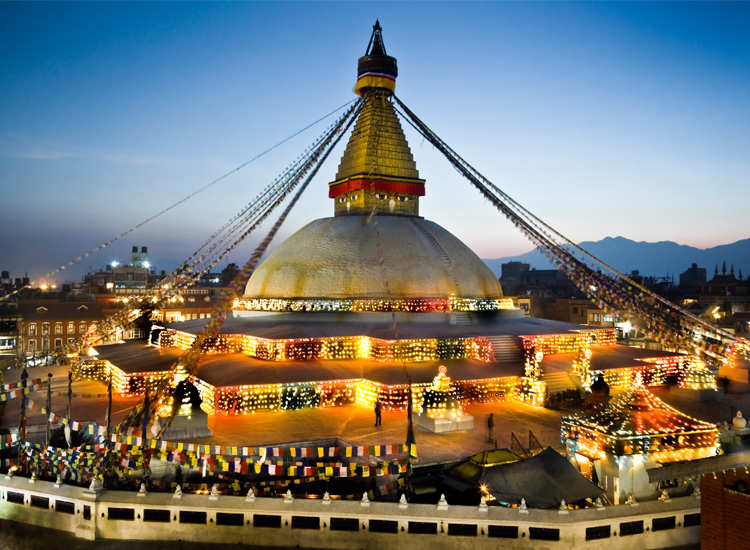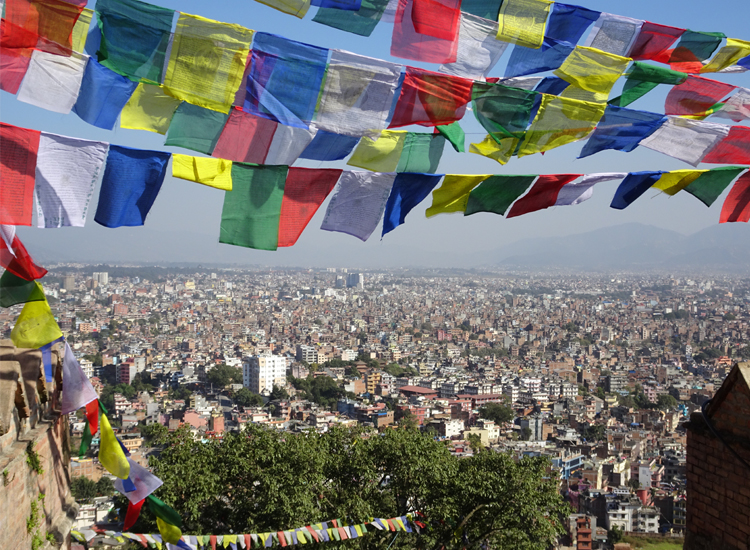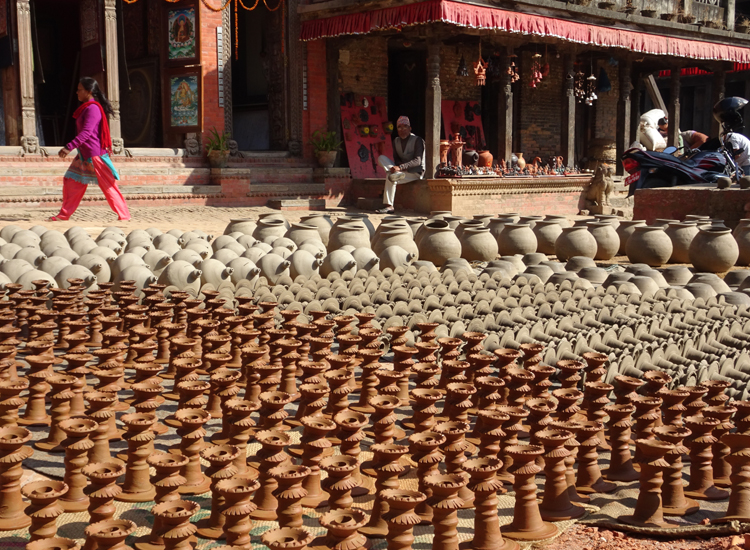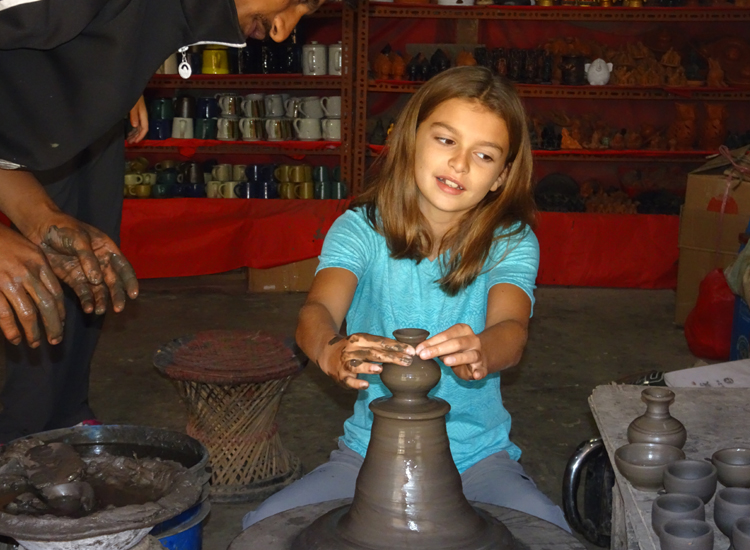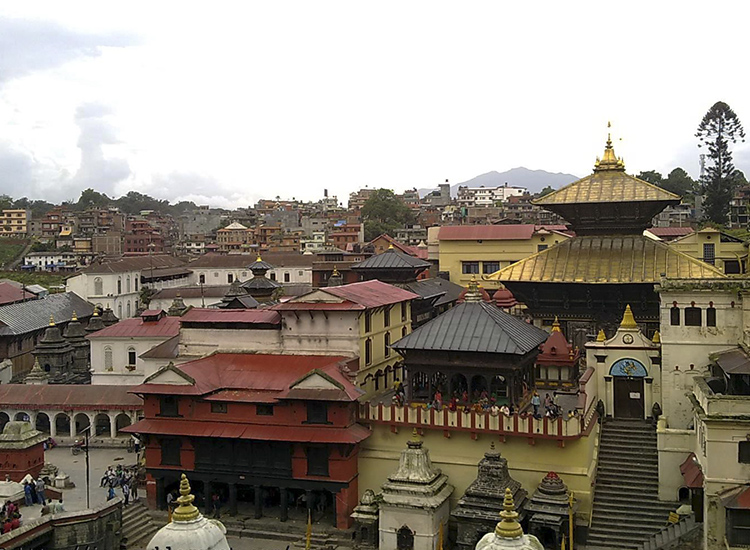Kathmandu Valley
It is the capital city of Nepal surrounded by four hills-Fulchowki, Chandragiri, Shivapuri and Nagarjun. It has a multiethnic population within a Hindu and Buddhist majority. Religious and cultural festivals form a major part of the lives of people residing in Kathmandu. Tourism is an important part of the economy. Kathmandu was ranked third among the top ten upcoming travel destinations in the world by TripAdvisor and ranked first in Asia. Kathmandu valley is described as "an enormous treasure house of art and sculptures", which are made of wood, stone, metal, and terracotta, and found in profusion in temples, shrines, stupas, gompas, chaityas, and palaces. The art objects are also seen in street corners, lanes, private courtyards and in open ground. It is also the home to a number of museums and art galleries, including the National Museum of Nepal. Nepal's art and architecture is an amalgamation of two ancient religions, Hinduism and Buddhism. The staple food of most people in Kathmandu is dal bhat. This consists of rice and lentil soup, generally served with vegetable curries, achar. Most of the fairs and festivals in Kathmandu originated in the Malla period or earlier. Traditionally, these festivals were celebrated by Newars. In recent years, these festivals have found wider participation from other Kathmanduites as well. Kathmandu is the city is the gateway to the Nepalese Himalayas, and home to seven world heritage sites: the Durbar Squares of Hanuman Dhoka, Patan and Bhaktapur; the Stupas of Swayambhunath and Baudhanath; and the temples of Pashupati and Changu Narayan. Kathmandu valley is also known as the open museum because you will find a temple with fine art and architecture every corner and side of the road. The UNESCO world heritage sites that you are going to visit possess the story and culture of the valley from its beginning. Visit the beautiful stupas and temples of surrounding areas.
Kathmandu half-day tour duration will be about 4hr and 30 min. During the duration you will visit the cities most well-known attractions. Swayambhunath Temple is the oldest Buddhist shrine and is the best place to observe religious harmony between Nepalese Buddhists and Hindus. Bouddhanath Stupa, one of the largest stupa in entire South Asia and Pashupatinath Temple, an ultimate pilgrimage for Hindu throughout the world. Morning you will travel to the Swayambunath stupa, a place offers spectacular views of Kathmandu valley and surrounding areas. You will spend about an hour there. Afterward, head back down the hill within a vehicle for a tour to Pasupatinath Temple, one of the sacred Hindu temples signifies Shiva Temple and cremation center of KTM Valley. Then our final destination to Boudhanath Stupa, one of the biggest Stupa around the world & best place to observe the Tibetan peoples lifestyle. We spend 2-hours exploring the monasteries, biggest stupas and surrounding areas of Boudhanath. After the visit, you will be dropped back to your hotel.
06:30 am Wakeup call
07:00 am Breakfast
07:30 am Our guide will pick up you from hotel in the morning after your breakfast and then take you for World heritage sightseeing.
07:30 am - 07:45 am: Drive up to Swoyambhunath Stupa.
The sightseeing program will start from Swayambhunath Stupa, most ancient and enigmatic of all the holy shrines in Kathmandu valley. The distance is about 3.9km from Thamel takes around 15min in private vehicles. Swayambhunath Temple, known as the 'monkey temple' because of the large tribe of roving monkeys. The Stupa is located at one of the highest elevations in Kathmandu Valley giving visitors panoramic views of the city. Swayambhunath is one of the holiest Buddhist stupas in Nepal. Huge prayer wheels and fine Buddhist paintings are displayed in the monasteries, as well as the largest Buddha statue in the country. The stupa consists of a dome at the base; above the dome, there is a cubic structure with the eyes of Buddha looking in all four directions. The stupa has stood as a hallmark of faith and harmony for centuries with Hindu temples and deities incorporated in this Buddhist site. The glory of Kathmandu Valley is said to have started from this point. It is said to have evolved spontaneously when the valley was created out of a primordial lake more than 2,000 years ago. This stupa is the oldest of its kind in Nepal and has numerous shrines and monasteries on its premises. The area surrounding the stupa is filled with chaityas, temples, painted images of deities and numerous other religious objects. There are many small shrines with statues of Tantric and shamanistic deities, prayer wheels for the Tibetan Buddhists, Shiva lingams (now disguised as Buddhist chaityas and decorated with the faces of the Dhyani Buddhas). We then drive towards Pashupatinath temple about 7.7km consumes 35min to reach.
08:40 am - 09:15 am: Drive to Pasupatinath Temple
Pashupatinath Temple is one of the most sacred Hindu temples of Nepal located at the banks of holy Bagmati River. Every year this temple attracts hundreds of elderly followers of Hinduism. The temple is the ultimate pilgrimage for Hindus throughout the world. The area is swarmed in by the Hindus from different part of the country. The two-storied pagoda temple of Pashupathinath houses the five-faced statue of Lord Shiva. Apart from the main shrine, there are numerous temples dedicated to different god and goddess in and around the Pashupatinath temple area. This temple is an important destination for art historians. It displays a variety of temple design some of which are Dome style, Pagoda style, Shikhara style and so on. Additionally, there are varieties of statues and sculptures around the complex. There are statues made of stone, metal, and wood. The door and pillars around the temple area are carved in beautiful shapes of God and griffins. The temple is built in the pagoda style of architecture, with cubic constructions and carved wooden rafters on which they rest, and two-level roofs made of copper and gold. After we continue to Boudhanath Stupa which is 2.3km from here takes around 15min to reach.
10:15 am - 10:30 am: Drive to Boudhanath Stupa
We take rest with a cup of coffee on the rooftop restaurant and enjoying the calm and peaceful ambiance. Boudha stupa is one of the largest stupas in the world forming a religion and culture hub for the Tibetan and people from the Himalayas of Nepal. The Stupa was on the ancient trade route from Tibet. The Stupa is claimed to entomb the relic of Kasyapa Buddha, the Buddha of third Bhadrakalpa. There are many construction legends associated with the stupa. Among them, the Newari legend says it was built by collecting the dew drops. So it is also called Khasi stupa. At the bottom, the stupa is surrounded by an irregular 16-sided wall. In addition to the Five Dhyani Buddhas, Boudhanath Stupa is closely associated with the Bodhisattva Avalokiteshvara (Padmapani), whose 108 forms are depicted in sculptures around the base. The mantra of Avalokiteshvara - Om Mani Padme Hum - is carved on the prayer wheels beside the images of Avalokiteshvara around the base of the stupa. The base of the stupa consists of three large platforms, decreasing in size. The square tower is topped by a pyramid with 13 steps, representing the ladder to enlightenment. The triangular shape is the abstract for the elements of fire. The form and the alternated squares and circles represent a three-dimensional mandala, which is comprised of abstract religious concepts. Every portion has a symbolic significance: the base, dome, spire, and pinnacle represent the five elements. The prayer flags tied to the stupa carry mantras and prayers into the universe, whilst fluttering in the wind. Traditionally, prayer flags come in sets of five, one in each of five colors. The five colors represent the elements and the Five Pure Lights. The main entrance to the upper platform of Bouddnath Stupa is on the north side. Early in the morning and evening time, Buddhist monks in maroon robes are seen circumambulating the stupa with prayer wheels on their hands. Small peripheral of the stupa is surrounded by the Thanka and rituals objects shop. The spot is favorable to explore both the culture and architectural sites. Numerous small stupas are located at the base.
11:30 am - 12:00 pm: Drive to Hotel
After finishing the tour, your guide will drop you at the hotel and you have free time to explore Thamel area or engage in your own activities.
Price
Duration
Season
Region

Certificate of Excellence
Based of services & reviewNeed More help ?
Talk to our travel experts by phone, email, WhatsApp/Viber, WeChat! We love to talk travel ! We're here to help and happy to assist you with your booking and make your dream come true.
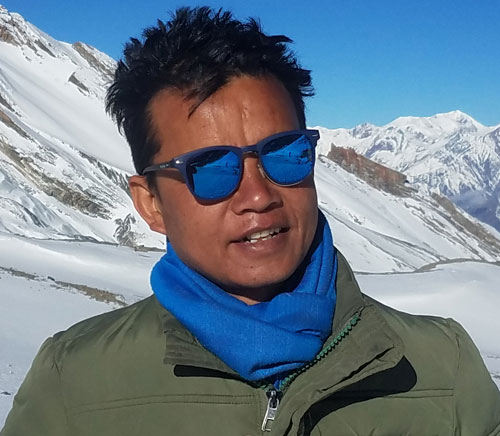
Mr. Tsering D. Sherpa
(National Mountain Leader)
Mountaineering, Treks & Tours
- +977-9862258888
(WhatsApp,Viber)7/24 - mytrek2@gmail.com
info@himalayansherpaadventure.com
RELATED TRIPS
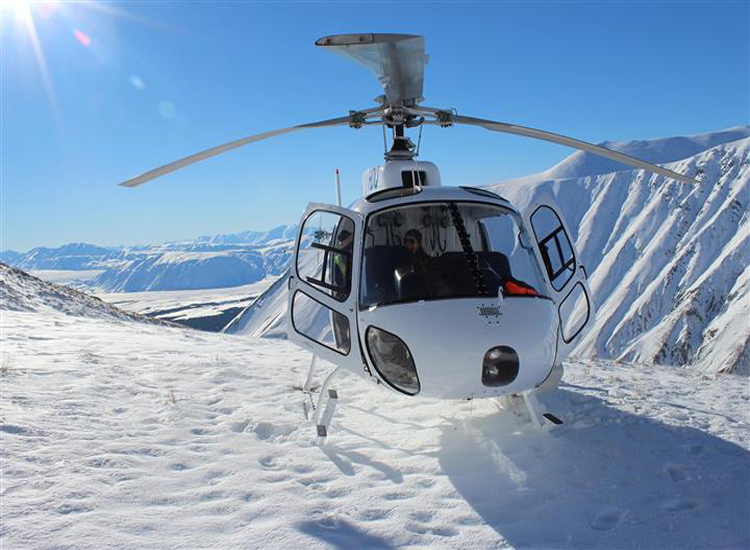
Everest Helicopter Tour
See earth's tallest pillar Mt. Everest 8,848m including more ....
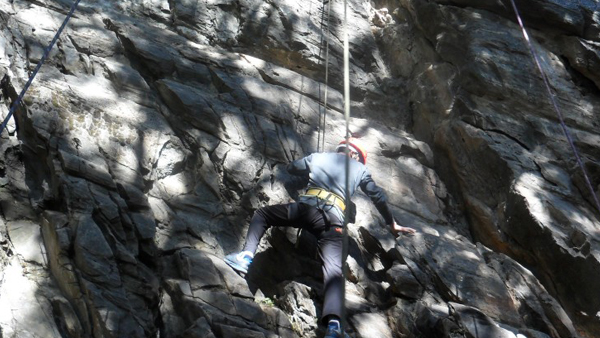
Nagarjun Rock Climbing
Nagarjun Rock Climbing is one of the popular and closet Climbing ....
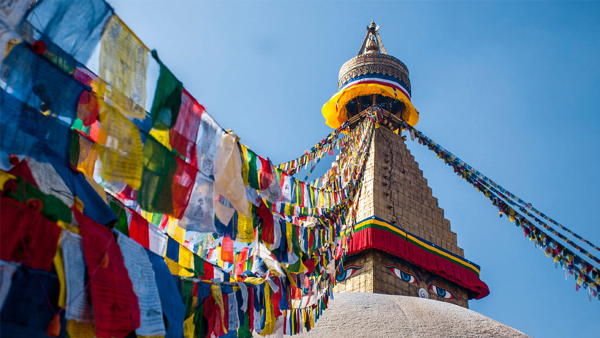
Kathmandu Chitwan Tour
6 Nights 7 Days Family Vocational tour to Kathmandu Chitwan Tour ....

